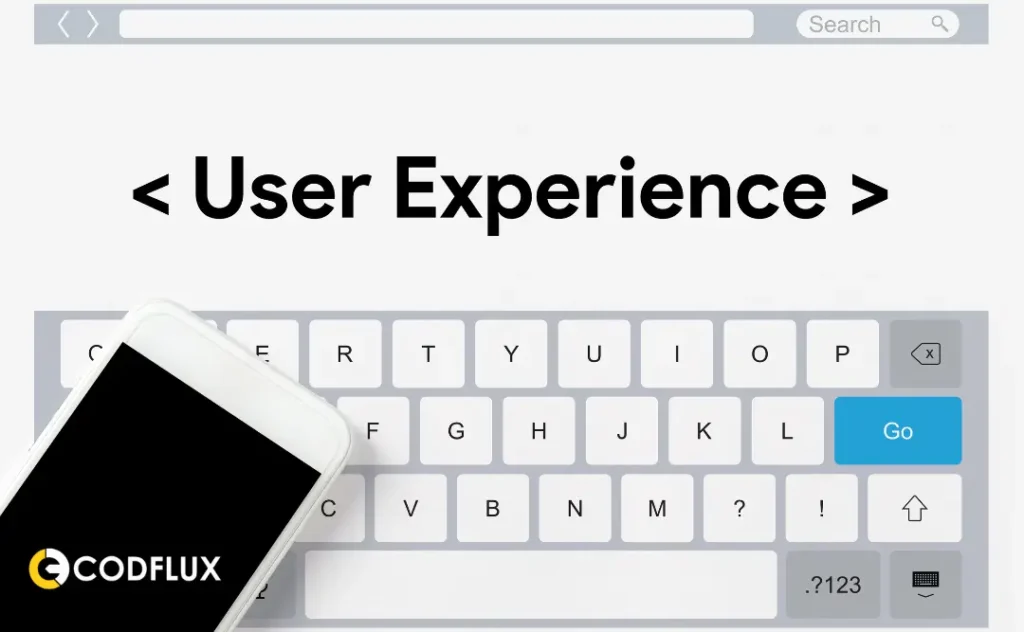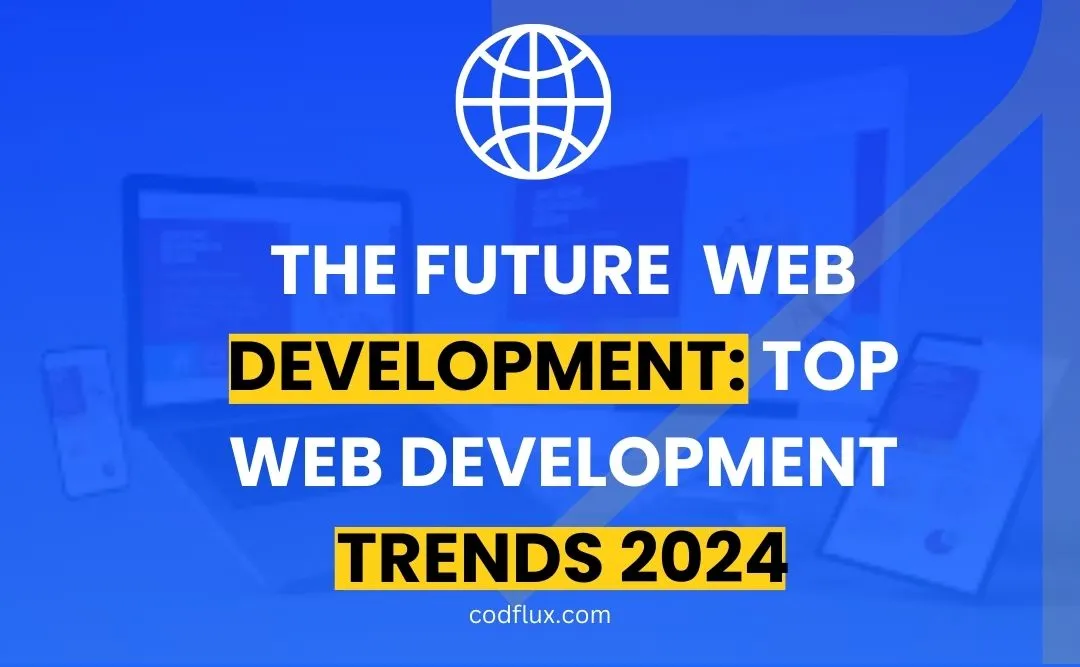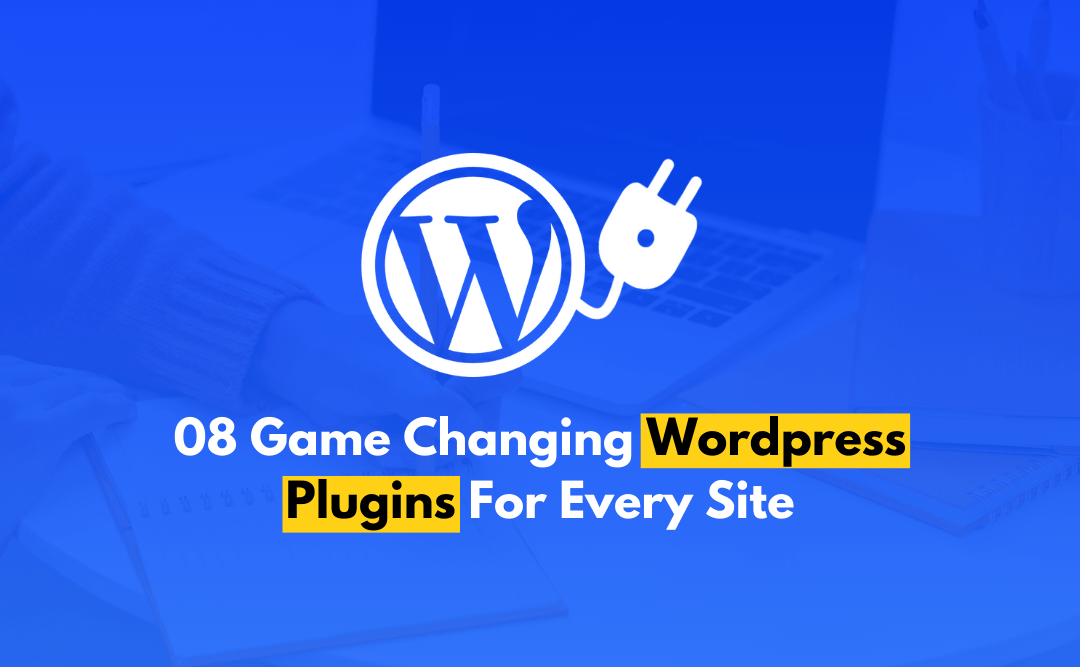Web development is evolving rapidly, and 2024 promises to bring some of the most exciting advancements yet. As technology continues to advance and user expectations grow, both developers and businesses must stay on top of the latest web development trends to remain competitive and deliver exceptional digital experiences.
So, what are the web development trends 2024? From AI-driven solutions to serverless architectures, the landscape is transforming in ways that will revolutionize the web.
At CODFLUX, we stay ahead of these trends, integrating the latest technologies into every project to ensure our client’s success in today’s competitive market.
AI-Driven Web Applications

Artificial Intelligence (AI) is revolutionizing web development, and in 2024, its role will be even more significant. AI tools, such as ChatGPT and AI-based APIs, will become essential in creating smarter, more personalized web experiences. AI will enhance customer interactions, automate tasks, and enable real-time data analysis, which is why AI integration is one of the most critical web development trends in 2024.
For developers, mastering AI integration will be essential to remain competitive.
AI-Powered Developer Tools

AI is also transforming how developers work. Tools like GitHub Copilot and Raycast will streamline coding, automate repetitive tasks, and reduce errors. Adopting these AI-powered tools will enhance development efficiency, allowing developers to focus more on creativity and complex problem-solving.
In 2024, AI-powered developer tools will be key for delivering faster and more accurate results.
Rise of Serverless Architectures
Serverless architecture is reshaping web development. Platforms like AWS Lambda and Google Cloud Functions allow developers to run applications without managing physical servers. This trend will continue to grow in 2024, as serverless setups reduce infrastructure costs and enable faster scalability.
Serverless architecture is particularly beneficial for building APIs, IoT applications, and microservices, making it a game-changing web development trend for 2024.
Jamstack Architecture for Performance
Jamstack (JavaScript, APIs, and Markup) is one of the fastest-growing web development trends for 2024. By relying on static files for performance and security, Jamstack offers faster load times and improved scalability. In 2024, developers should focus on mastering static site generators like Next.js and Gatsby to build Jamstack applications, especially for content-heavy websites.
For businesses aiming to deliver high-performance websites, Jamstack will be a must in 2024.
Enhanced User Experience with Animated UI

As attention spans shrink, engaging and interactive user interfaces will be vital in 2024. Libraries like Framer Motion will simplify the implementation of smooth animations and transitions, making UI design more dynamic. Incorporating animations, 2D, and even 3D elements into your designs will be essential for improving user engagement.
Creating visually captivating user experiences is one of the most important web development trends in 2024.
Dark Mode: A Standard Feature
Dark mode has become a mainstream feature, and in 2024, it will be a must-have for websites and apps. Dark mode improves user experience, especially for night-time browsing, and reduces eye strain. Developers should get familiar with best practices for implementing dark mode using tools like Tailwind CSS.
TypeScript’s Growing Popularity
TypeScript continues to grow in popularity, overtaking JavaScript in many areas due to its ability to prevent errors and improve productivity. As more frameworks, like React and Next.js, support TypeScript, its adoption will only increase in 2024. Developers should embrace TypeScript to enhance code reliability and maintainability.
Component-Driven Development
Component-driven development, popularized by React and Vue, will remain a dominant web development trend in 2024. Reusable components allow for more efficient, scalable applications while improving collaboration between development and design teams. Mastering this approach will be essential for building robust, maintainable applications in 2024.
Headless CMS with Visual Editing
In 2024, the demand for headless CMS solutions like Prismic and Strapi will grow. These platforms decouple the frontend from the backend, providing more flexibility for developers while offering visual editing tools for non-technical content creators. Headless CMS is perfect for dynamic websites, allowing easy content updates without code changes.
API-First Development
API-first development is becoming the standard for building scalable, cross-platform applications. By focusing on APIs from the start, developers ensure their applications are flexible and easily integrable with other platforms. In 2024, more businesses and developers will adopt this approach, especially for Jamstack and headless CMS projects.
API-first is another crucial web development trend that will shape the future of development in 2024.
Conclusion
The future of web development in 2024 is full of innovations, from AI-powered tools to serverless architecture, Jamstack, and API-first development. Staying up-to-date with these trends will be essential for developers and businesses alike. By embracing these technologies, you can create faster, more efficient websites that meet the growing demands of users.
Looking for web development services that keep pace with the latest web development trends? At CODFLUX, we’re here to help you bring your vision to life. Contact us today to create something amazing!
Frequently Asked Questions
What is web development?
Web development is the process of creating, building, and maintaining websites or web applications for the internet, combining design, coding, and content management.
What are the key skills needed for web development?
Key skills include proficiency in programming languages like HTML, CSS, and JavaScript, knowledge of frameworks like React or Angular, understanding of databases, and the ability to work with version control systems like Git.
How long does it take to build a website?
The time it takes to build a website depends on its complexity. A simple site can take a few weeks, while a more complex site with custom features, animations, or e-commerce functionality might take several months to complete.





